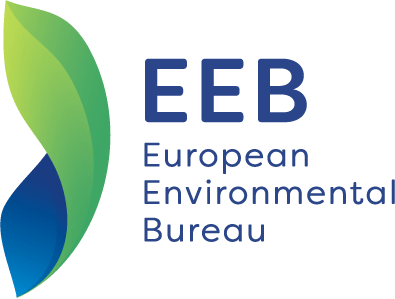Germany close to miss key chance to slash toxic industrial pollution
The Bundesrat vote on industrial emission limits is the country’s second opportunity to protect public health and lead Europe by example.
On March 26th the German Bundesrat will vote on the adoption of EU pollution limits for large combustion plants. Campaigners call on the Parliament to reject the government’s proposal [1], and take the opportunity to clean up German industry and protect people from toxic pollution.
The EU Industrial Emissions Directive requires all operators of Large Combustion Plants to comply at the latest by 17 August 2021 with emission ranges set by EU law according to the current best available technologies to prevent pollution (BATs). These emission limits should have been transposed into German law as early as August 2018.
Germany could choose to adopt stricter emission limits that would prevent thousands of premature deaths and save society €5.6 billion a year in terms of health and other air pollution-related costs just for coal combustion. However, three years later than the implementation deadline, the German government’s proposal aligns to the most indulgent possible limit values to favour the lignite industry [2]. This would not trigger any further abatement by German plants of toxic pollutants such as mercury and nitrogen dioxide (NOx), and leave citizens exposed to tons of dangerous emissions that could be avoided [3].
Ahead of the Bundesrat vote, campaigners call for regional representatives to reject the government’s proposal and table a new and stricter one, that protects public health and respects international obligations [4].
Christian Schaible, a Policy Manager at the European Environmental Bureau (EEB), said:
“The German government tabled a proposal written by and fitting the interests of the lignite industry. Germany has failed to defend their citizens from corporate greed, by bailing out its lignite polluters and allowing them to circumvent further pollution reduction techniques on mercury and nitrogen dioxide. This is their chance to rectify that mistake, slash toxic emissions and lead Europe by example.”
With coal phase out discussions happening in several central and eastern European countries, and the European Commission possibly strengthening emission limits in the near future, the German Bundesrat vote has far reaching implications beyond national borders and can set the tone for others to follow.
Notes for editors
[1] Germany is implementing EU BAT standards through General Binding Rules (GBR 13.BImSchV). The final draft proposals would implement the lenient upper range levels set in the LCP BREF adopted in 2017 and based on 2010 emissions data. (See 2017 EEB study).
The proposal will provide a limit on NOx set to 175mg/Nm³, whilst levels below 85mg/Nm³ are achieved through secondary DeNox techniques that the operators do not want to implement due to cost considerations. For mercury, the higher level of 7µg/Nm³ is implemented in Germany, whilst BAT sets the level at 1µg/Nm3 (also confirmed as BAT in the Minamata Convention reference documents). The current proposal will further allow sub-standard burning of lignites to emit about three times more sulphur dioxide compared to the lenient range (130mg/Nm³) and 32 times the BAT level (10mg/Nm3). This special derogation benefits a few plants firing the MIBRAG coals and otherwise benefiting from lenient pollution limits known as the IED Article 31 derogation e.g. KW Lippendorf, HKW Chemnitz Nord, KW Boxberg, KW Jänschwalde and KW Schkopau).
[2] Lignite, or brown coal, is the most polluting and health-harming form of coal. It is still dug up from open-cast mines in Europe, leading to further water pollution degradation. Emissions from lignite contain very high levels of mercury and sulphur. (See EEB report)
[3] The EEB has heavily criticised the draft proposal as an example of “Klientel-politik” in its August 2020 submission to the public consultation on the German draft law for its failure to consider the important public benefits that would be delivered by stricter limits. The public benefits of preventing just the NOx pollution could amount to 11,9 Billion € over 10 years. Requiring lignite operators to meet the strict mercury level of 1µg/Nm³ could also prevent a damage cost of about 165 Million € per year of operation. Considering all air pollutants, a potential 5.6 Billion € in annual air pollution cost savings could be achieved. The EEB also criticised the lack of transparency on public access to monitoring data in Germany, and authorities’ failure to correct those flaws.
[4] Enforcing the strictest NOx limit would allow Germany to cut the pollution load by more than 80%. Lowering emission limits on mercury from the current 7µg/Nm³ to 1µg/Nm³ is also necessary for Germany to enforce the Minamata Convention on mercury, which the country ratified in 2017, as well as the EU Water Framework Directive, which requires a mercury phase out by 2027.

